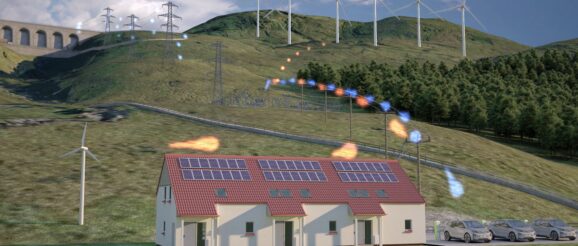SP Energy Networks on data and innovation: The keys to the network of the future – Energy Networks Association (ENA)

Graham Campbell, Head of Whole Systems & Commercial at SP Energy Networks and Chair of ENA’s Data & Digitalisation Steering Group, talks about the new iDentify app, and how innovation, data and digitalisation will deliver the networks of the future.
With the energy landscape rapidly changing, we’re taking steps to prepare for a radically different network. A network that was built at a time when the demand we’re currently seeing would have been unthinkable – making it clear our job now goes well beyond simply keeping the lights on.
As we chart our course to net zero, we’re already seeing an increased uptake of low carbon technologies (LCTs) and know that society will need an electricity network that’s ready and able to make this transition a reality. By 2030, we expect to connect 1.5 million electric vehicles to the network, up to 1 million new heat pumps, and over 7GW of distributed generation. To support these incredible numbers, we need smarter, more agile ways to manage our network.
Modernisation is therefore critical, and that’s where data and innovation come in.
If we can plan ahead and predict the future demand on the electricity network, we can invest to solve the challenges we know we’re facing. That’s why we’ve developed innovative tools like our EV-Up and Heat-Up platforms, which use big data to help us predict, model, understand and plan for where and when electric vehicles and heat pumps (and other forms of low carbon heating) will impact on our network.
It’s also why Charge, one of our flagship innovation projects, is focused on developing an interactive online tool known as ConnectMore to illustrate where EV charging demand is and where the electricity network has the capacity to support chargepoint installations.
Beyond our modelling tools, we’re also developing ways to increase visibility of our network as it stands today. Our iDentify app, which is an industry first, combines smartphone camera capabilities and Artificial Intelligence recognition to capture up to date asset information via our field staff and crowdsourcing by LCT installers. Digitalisation of processes like this unlock real potential to streamline our operations and enable us to move at pace to respond to the ever-evolving needs of our customers and communities.
As we bring these innovative tools together and harness their combined capabilities, we develop a whole system approach – critical to our future as a Distribution System Operator (DSO), alongside new ways of balancing the network, like flexibility. If we can be smarter on how we manage capacity, we not only avoid the need for the costly and time consuming traditional methods of network reinforcement, we also unlock the capabilities required for the low carbon technologies we know we need more of in order to reach net zero.
Through digitalisation and harnessing the power of data, we will create the step change needed to deliver this cleaner future at the pace our customers need. Transforming traditional network operations with digital innovation, and having the regulatory framework and investment there to support that, will be key to us delivering the network of the future.
